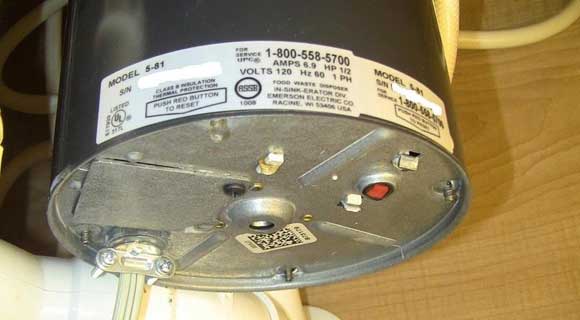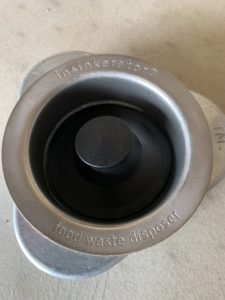The writer is making several great annotation on Tips on Fixing a Leaking Garbage Disposal in general in this content which follows.

Waste disposal unit are necessary kitchen home appliances that assist in dealing with food waste effectively. Nonetheless, a leaking garbage disposal can be an irritating and messy problem to handle. The good news is, many leaks can be fixed easily with a few easy steps. In this short article, we will talk about exactly how to repair a leaking garbage disposal effectively.
Intro
Garbage disposals are mounted under cooking area sinks and are created to shred food waste into smaller items, enabling it to pass through the pipes system conveniently. While these devices are typically trustworthy, leakages can take place over time due to deterioration, loose links, or damages to the unit.
Common Reasons For Leaks in Waste Disposals
Worn Seals and Gaskets
Seals and gaskets play a vital function in protecting against water from leaking out of the waste disposal unit. Over time, these elements can wear away, leading to leakages around the disposal device.
Loose Links
The connections between the waste disposal unit and the pipes system can end up being loose gradually, creating water to leak out during procedure.
Fractures or Openings in the Disposal Device
Physical damages to the garbage disposal, such as fractures or openings in the housing, can likewise cause leakages.
Identifying the Source of the Leak
Prior to trying to deal with a dripping waste disposal unit, it is vital to recognize the resource of the leakage. This can normally be done through aesthetic inspection or by conducting basic examinations.
Visual Examination
Examine the waste disposal unit system very carefully for any kind of signs of water leakage. Pay very close attention to locations around seals, gaskets, and link factors.
Examining for Leakages
One way to evaluate for leaks is by running water through the disposal unit and checking for any type of visible signs of leakage.
Tools and Products Needed for Dealing With a Dripping Waste Disposal Unit
Prior to beginning the repair service process, gather the necessary devices and products, including a screwdriver, adjustable wrench, plumbing's putty, replacement seals or gaskets, and epoxy or patching product for repairing cracks or openings.
Step-by-Step Guide to Fixing a Dripping Garbage Disposal
Turn Off the Power
Prior to attempting any kind of repair services, make certain that the power to the garbage disposal device is turned off to stop the risk of electric shock.
Locate the Leak
Identify the exact location of the leak and identify the cause.
Tighten up Links
Use a wrench to tighten up any loosened connections in between the disposal unit and the pipes system.
Change Seals or Gaskets
If the leak results from worn seals or gaskets, eliminate the old parts and replace them with brand-new ones.
Patching Splits or Holes
For fractures or openings in the disposal device, use epoxy or an appropriate patching product to secure the broken area.
Evaluating the Waste Disposal Unit After Repair Work
As soon as the repair is total, evaluate the waste disposal unit by running water through it to make certain that the leak has actually been dealt with.
Preventive Upkeep Tips to Avoid Future Leakages
To prevent future leaks, it is vital to do regular maintenance on your waste disposal unit. This includes keeping it tidy, preventing putting non-food things or difficult objects down the disposal, and periodically looking for leaks or various other problems.
Conclusion
Finally, taking care of a dripping garbage disposal is a relatively simple process that can be finished with fundamental devices and materials. By adhering to the steps outlined in this article and exercising precautionary upkeep, you can keep your garbage disposal in good working condition and avoid expensive repair services in the future.
HOW TO REPAIR A LEAKING GARBAGE DISPOSAL
The first thing to do if your garbage disposal starts to leak or exhibits other symptoms of wear and tear is to inspect the appliance quickly. Before making any repairs, check for any obvious cracks or damaged parts and turn the disposal off at the power source. Once you have located the issue, several tools might assist you in solving it. Many resources are available to assist you in putting your disposal back in working order, whether by purchasing new parts or professional assistance from a repair technician. So immediately act if you need help with leaky garbage disposal. You can rapidly resolve the problem and enjoy smoothly functioning appliances with thorough troubleshooting and help from web resources.
Food waste is disposed of using a garbage disposal system, which grinds and flushes it down the toilet. A garbage disposal is a motorized device with one or more rotating blades that grinds up food waste into little bits. They are commonly found under the kitchen sink. A dishwasher inlet or connector is often built into garbage disposals, allowing extra water to drain into the sink’s dishwasher. Several things, such as clogs, worn-out components, or damage to the inside walls of the unit, can bring on garbage disposal leaks or other problems.
WHAT ARE SOME COMMON PROBLEMS WITH GARBAGE DISPOSALS?
Jamming: One of the most frequent issues with garbage disposals is jamming. It occurs when hard or fibrous materials, such as bones, potato peels, or fruit pits, get stuck in the disposal’s blades or impeller. It can prevent the unit from operating correctly or cause it to make unusual noises. Clogging: If too much food waste or non-food items are put into the disposal at once, it can lead to clogging. Clogged disposal may result in slow drainage or a complete backup of water in the sink. Grease and fats can also solidify inside the disposal and contribute to clogging. Leaks: Garbage disposals can develop leaks over time. The most common areas for leaks are the sink flange, the discharge pipe connections, or the dishwasher connection. Leaks can cause water damage and need to be addressed promptly. Foul odors: Food residue can build up in disposal over time and cause unpleasant odors. Bacteria and mold growth inside the unit can also contribute to foul smells. Dull blades: The grinding blades in the disposal can become dull over time, resulting in inefficient chopping and grinding of food waste. That may lead to more frequent jams and increased strain on the motor. HOW CAN YOU TELL IF YOUR GARBAGE DISPOSAL IS LEAKING?
Visible water: Check underneath the sink where the garbage disposal is installed. If you notice water pooling or dripping around the unit or any adjacent pipes, it’s a clear sign of a leak. Musty odor: A persistent or moldy smell from your kitchen sink area could indicate a hidden leak. The moisture from a leaking garbage disposal can create a damp environment that promotes mold and mildew growth. Water damage: Examine the area surrounding the garbage disposal for any signs of water damage. Look for water stains, discoloration, or warping on the cabinet floor or walls beneath the sink. Decreased performance: A leak in the garbage disposal can affect its functionality. If you notice that the disposal is not grinding food waste properly or is making unusual noises, it could be due to water damage or a leak compromising its mechanisms. Rust or corrosion: Inspect the garbage disposal for any signs of rust or corrosion. A leaking unit can cause metal components to deteriorate over time. Look for rust-colored stains or deterioration on the disposal unit or surrounding pipes. https://theappliancepeople.com/how-to-repair-a-leaking-garbage-disposal/

We were shown that write-up about Tips on Fixing a Leaking Garbage Disposal from an associate on our other web address. Loved our content? Please share it. Help somebody else discover it. I praise you for your time. Come back soon.
Visit My Site